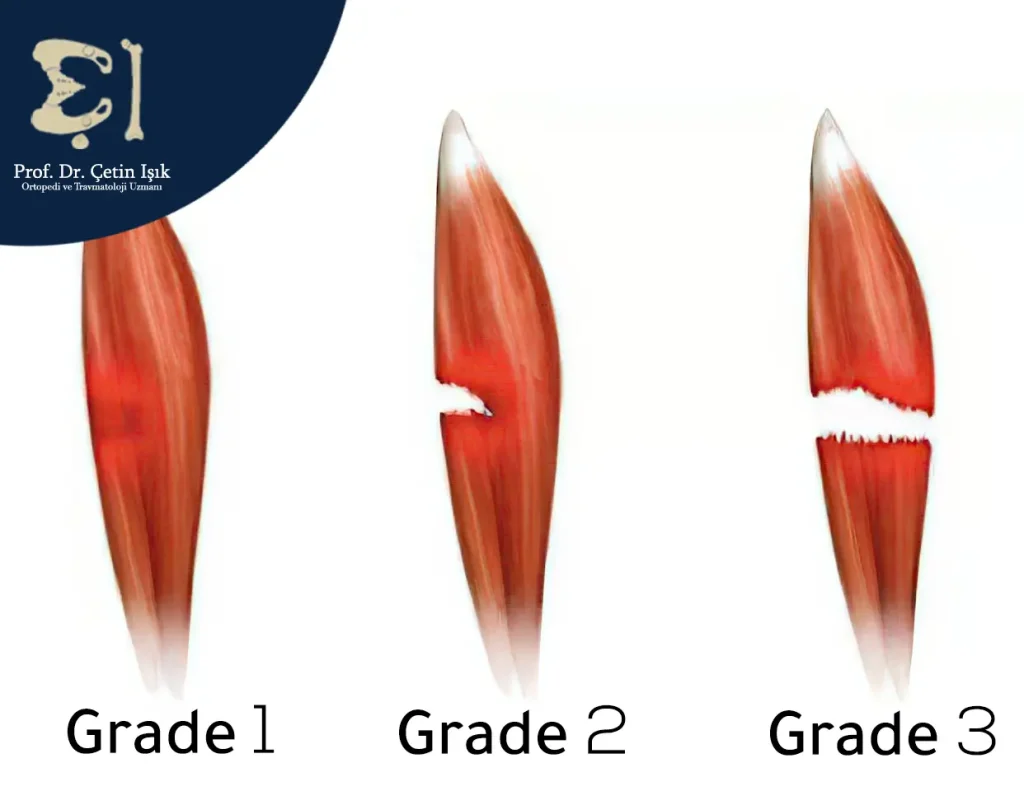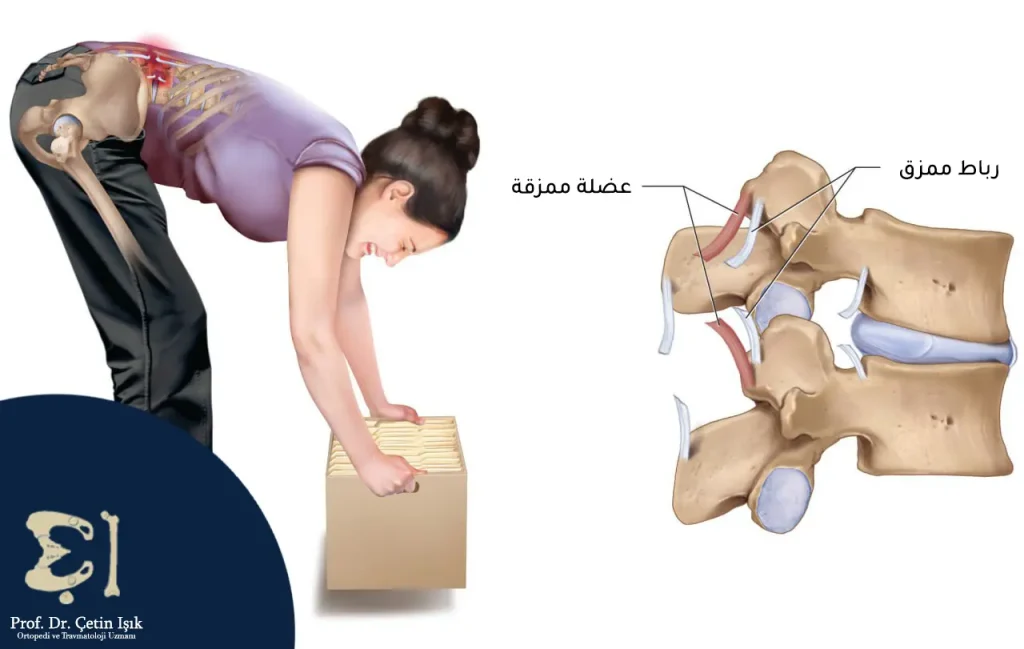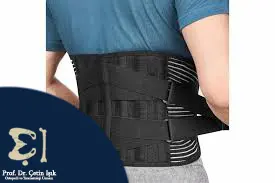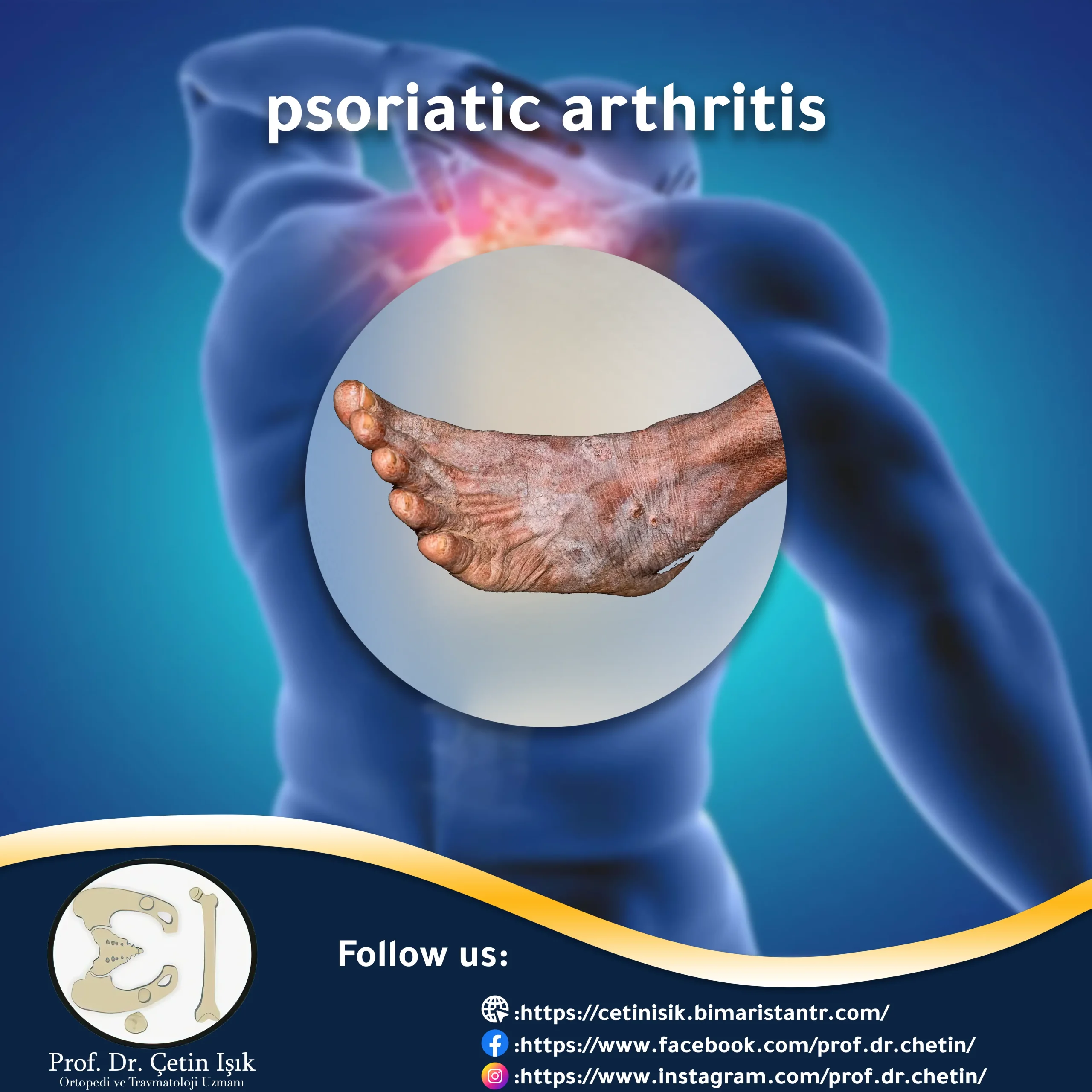Back muscle tear is the occurrence of stretching and cracking of muscle fibers due to sudden movements or lifting heavy objects incorrectly, which leads to feeling severe pain that worsens with movement.
A tear in the back muscles can cause serious complications such as spinal instability. Learn with us about torn back muscles, its causes and ways to prevent it.
Glimpse of torn back muscles
Back Muscles Torn is the stretching and damage of muscle fibers and tendons due to the application of an effort to them that they cannot bear and strain them, which leads to feeling pain.
The back is a complex structure composed of muscles, tendons, bones, and cartilage, which bear a lot of the body’s weight during activities such as walking and running. If these muscles and tendons are not strong and can withstand the effort applied to them, they will be torn and damaged more often.
Muscle tears in the back are common in people who engage in activities that include repetitive and sudden movements, which causes muscle fatigue and tearing. Elderly people are also more susceptible to back muscle tears due to their weak muscles and lack of flexibility.
A muscle tear in the back can be divided into 3 degrees depending on the severity of the tear, which are:
- Grade 1: This is a slight tear in the fibers, causing slight pain and stiffness
- Grade 2: Moderate (partial) tear of the muscle fibers and thus the pain is more severe
- Grade 3: Severe (total) complete tear of the muscle fibers, severe pain, and muscle loss of function

Causes of torn back muscles
There are many causes that lead to muscle tears in the back, especially those that cause muscle fatigue and weakness. The causes include the following:
- Excessive and sudden force: Sudden application of excessive force may cause muscle tearing, as happens when lifting heavy objects.
- Poor posture: Poor posture can cause strain on the back muscles, which increases the risk of tearing, such as when sitting or standing with the back bent.
- Repetitive movements: cause muscle fatigue and strain, which increases the possibility of muscle tearing.
- Not warming up before practicing sports activities: cold and tight muscles are more susceptible to tearing during sports.
- Traumatic injuries, such as falls, cause tears in the lower back muscles

Symptoms of torn back muscles
Symptoms of a torn back muscle vary depending on the severity and degree of the tear, and include the following:
- Pain: The pain of a torn back muscle is usually characterized by sudden pain localized in the area of injury with the possibility of spreading to the shoulder and neighboring muscles. Its severity ranges from mild to severe depending on the severity of the tear.
- Back muscle spasmA tear causes a muscle spasm to protect the affected area, and this increases the pain.
- Limits range of motion: occurs as a result of stiffness of the torn muscle.
- Swelling and inflammation: Inflammation may occur in the torn muscle and it becomes tender (pain when touched).
- Difficulty standing and walking: Because muscle tear causes loss of strength and stability of the back, which leads to difficulty in performing daily activities such as standing and walking.
Diagnosis of back muscle tear
The diagnosis of a rupture depends on the clinical history by knowing the activities that the patient engages in and whether he has been exposed to any injury, in addition to a clinical examination that includes palpating the area to detect dull pain and checking the range of muscle movement to determine the extent of the rupture.
Imaging investigational methods such as X-RAY and MRI can also be used for a better and more comprehensive evaluation or to rule out other causes.
Treatment of torn back muscles
The treatment for a torn back muscle is no different from the treatment of muscle rupture In general, it ranges from rest and pain relief to surgical treatment in severe cases that do not respond to other treatments.
Conservative treatment
Conservative treatment includes the following:
- Rest: Rest can prevent the injury from getting worse and allow the torn fibers to begin to heal
- Pain relief: by taking non-prescription pain relievers such as non-steroidal anti-inflammatory drugs (NSAIDs) (ibuprofen-naproxen).
- Stabilizing the back with supports and devices in some cases in order to prevent the injury from extending as a result of spinal instability

Physical therapy
The goal of developing a special physical therapy program for the patient is to help him recover faster and restore muscle strength and flexibility. Physical therapy includes the following:
- Strengthening exercises: These are exercises to treat back muscle tears, through which the strength and flexibility of the muscles are increased and made more resistant to tears
- Manual therapy: Manual therapy includes many techniques, including massage and relieving muscle tension through manual stretching
Surgical treatment
Surgical treatment can be used in the case of severe (complete) ruptures, in addition to ruptures that do not respond to previous treatments. Surgical treatment includes repair of the tear or reconstruction with grafts.
Healing time for a torn back muscle
The healing period for back muscle tears varies depending on the affected muscle and the severity of the tear. Mild tears take 3-8 weeks to heal, while severe tears may require several months to recover.
Preventing back muscle tears
Back muscle tears can be prevented by following the following tips:
- Exercising regularly increases muscle strength and makes them more able to withstand effort
- Warm up before engaging in any sporting activity to increase blood flow to the muscles and make them more resistant to stress
- Maintaining a correct back position while performing normal activities such as standing and sitting upright
- Reducing weight in cases of obesity because it increases the effort applied to the back
In conclusion, a rupture of the back muscles can lead to them losing their function, which affects the stability and stability of the spine, which may result in problems that affect the patient’s health and lifestyle.
Sources:
Common questions
Through the appearance of symptoms of torn back muscles, which are pain, muscle spasm, limited movement, and difficulty standing and walking.
For mild strains, a muscle tear can heal on its own with rest for several weeks.
The healing period for a torn back muscle varies depending on the degree of the tear, ranging from 3-8 weeks for mild and moderate tears, up to several months for severe tears.




